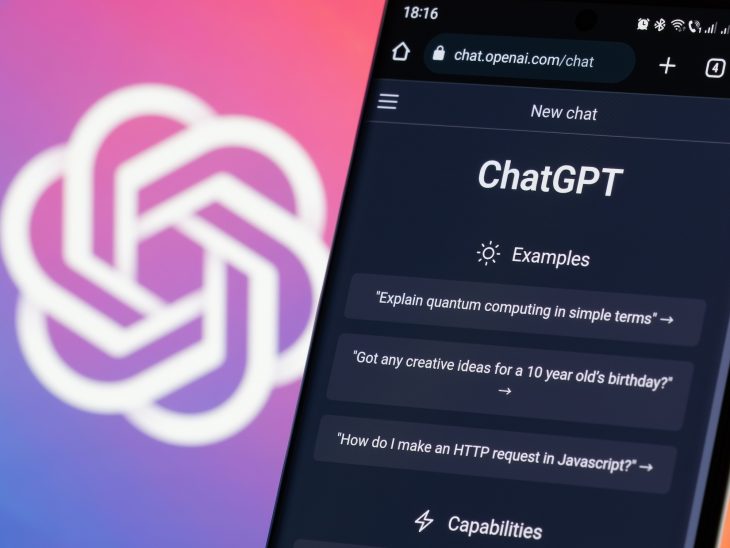
ChatGPT, powered by OpenAI’s GPT-3.5 architecture, is an advanced language model that has revolutionized the field of natural language processing. It can generate human-like text and engage in meaningful conversations. This article will delve into the top 10 fascinating facts about ChatGPT that you may need to be made aware of.
GPT Stands for “Generative Pre-trained Transformer”
GPT, the acronym for Generative Pre-trained Transformer, refers to the underlying architecture of ChatGPT. Developed by OpenAI, this transformer-based model utilizes deep learning techniques to understand and generate human-like text. The transformer architecture allows GPT to process and analyze vast amounts of text data for various applications, including chatbots.
GPT-3.5, the version powering ChatGPT, is imposing due to its large-scale parameters, enabling it to generate coherent and contextually relevant responses. With 175 billion parameters, GPT-3.5 is one of the most significant language models, resulting in enhanced language understanding and generation capabilities. These parameters enable ChatGPT to capture and learn intricate language patterns and context details, facilitating more accurate and natural-sounding conversations.
ChatGPT Is Trained in a Diverse Range of Data
To achieve its impressive capabilities, ChatGPT is trained on a diverse range of data from the internet. This includes books, articles, websites, and other sources to provide a broad knowledge base. The model learns patterns, linguistic nuances, and context from this vast dataset, generating coherent and contextually appropriate responses.
The diverse training data of ChatGPT allows it to have a broad understanding of different topics and domains. It answers questions about science, history, technology, and many more subjects. The training data is regularly updated to keep up with the ever-evolving nature of information on the internet. This ensures that ChatGPT stays up-to-date with the latest developments and trends, making it a valuable resource for users seeking accurate and relevant information.
ChatGPT Uses Reinforcement Learning
ChatGPT is trained using supervised learning and reinforcement learning techniques. Initially, human AI trainers provide conversations where they play both sides—the user and the AI assistant. These trainers also have access to model-written suggestions to assist them in formulating responses. The model then learns by predicting the most suitable answer given a conversation history and is fine-tuned using reinforcement learning to enhance its performance.
Reinforcement learning is crucial in training ChatGPT to optimize responses based on a reward system. It involves providing feedback to the model by scoring the quality of its responses. The model then learns to improve its performance by maximizing the rewards received. This iterative process helps ChatGPT refine its conversational abilities over time, resulting in more accurate and contextually appropriate responses.
Furthermore, reinforcement learning allows ChatGPT to adapt to different conversation styles and user preferences. By observing patterns in the rewards received, the model can adjust its responses to better align with the expectations and needs of the users. This adaptability makes ChatGPT a versatile and adaptable conversational AI assistant.
ChatGPT Demonstrates Contextual Understanding
One of the critical strengths of ChatGPT is its ability to understand and respond contextually. It can maintain a coherent conversation by considering the dialogue history and generating relevant responses. This contextual understanding allows ChatGPT to engage in more dynamic and interactive discussions, making it a valuable tool for various applications, including customer support and content generation.
ChatGPT’s contextual understanding goes beyond simply recognizing keywords or phrases. It analyzes the entire conversation history to grasp the context and nuances of the ongoing discussion. This enables ChatGPT to generate more tailored and specific responses to the user’s queries and needs. For example, if a user asks follow-up questions or refers to a previous topic, ChatGPT can provide consistent and informed responses, enhancing the overall user experience.
ChatGPT’s contextual understanding also allows it to handle ambiguous queries effectively. It can ask clarifying questions to seek further details or provide multiple potential interpretations of the query, enabling the user to specify their intent. This interactive and contextual approach fosters a more engaging and productive conversation between the user and the AI assistant.
ChatGPT Can Generate Creative Text
Beyond its ability to answer questions and provide information, ChatGPT can generate creative text. It can write stories and poems and even compose music. This creative aspect of ChatGPT demonstrates the model’s versatility and potential for use in various creative industries.
ChatGPT’s creative text generation capabilities are not limited to a specific genre or style. It can mimic the writing style of different authors, imitate the tone of a particular period, or even generate original content in its unique style. This opens up opportunities for content creators, writers, and artists to leverage ChatGPT as a source of inspiration or assistance in their creative endeavors.
Moreover, ChatGPT’s creative capabilities extend to the realm of cryptocurrency. It can generate informative and engaging content about blockchain technology, cryptocurrency trends, and investment strategies. Whether you’re seeking a comprehensive explanation of decentralized finance (DeFi) or exploring the potential of non-fungible tokens (NFTs), ChatGPT can provide valuable insights and explanations clearly and concisely.
By tapping into ChatGPT’s creative text generation abilities, individuals and businesses in the crypto space, like Bitcoin 360 AI, can access informative content and keep up with the rapidly evolving world of digital currencies.
Moreover, ChatGPT’s ability to generate creative text extends beyond standalone pieces. It can also contribute to collaborative storytelling or assist brainstorming sessions by providing unique ideas and perspectives. ChatGPT is a valuable companion for individuals or teams seeking creative input or exploring new artistic directions.

ChatGPT Can Translate Languages
Thanks to its multilingual capabilities, ChatGPT can assist with translation tasks. Providing text in one language can generate a translation into a different language. While the quality may vary depending on the language pair and complexity, it offers a convenient solution for quick translations and overcoming language barriers.
ChatGPT’s translation abilities are not limited to word-for-word translations. It considers the context of the provided text to generate more accurate and contextually appropriate translations. This contextual understanding allows it to handle idiomatic expressions, cultural nuances, and other linguistic complexities that often pose challenges in translation tasks.
Additionally, ChatGPT’s multilingual capabilities enable it to assist users in exploring content in different languages. It can provide summaries or explanations of articles, blog posts, or other textual content in a language the user is more comfortable with, facilitating cross-language communication and knowledge sharing.
ChatGPT Can Generate Code
ChatGPT extends its utility beyond natural language processing by generating code snippets. It can understand programming-related queries and provide relevant code examples or assist in debugging code. This feature is handy for developers seeking quick solutions or exploring different coding possibilities.
ChatGPT’s ability to generate code results from training on vast programming-related text data. It has learned various programming languages’ syntax, conventions, and patterns, allowing it to understand and generate code snippets in response to user queries.
When developers encounter coding challenges or need assistance with specific programming tasks, they can rely on ChatGPT to provide guidance and suggestions. Whether writing a function, implementing an algorithm, or troubleshooting an error, ChatGPT can offer insights and code snippets that can be used as starting points or references in the development process.
ChatGPT streamlines the coding process and enhances productivity by augmenting developers’ capabilities. It saves time and effort by providing relevant code snippets, allowing developers to focus on higher-level problem-solving and innovation.
ChatGPT Can Be Customized
OpenAI provides an interface that allows developers and users to customize ChatGPT according to their specific requirements. Users can fine-tune the model by providing prompts and instructions to generate responses that align with their preferences or domain-specific knowledge. This customization opens up a wide range of applications for ChatGPT across various industries.
The customization process involves providing additional training data specific to the desired domain or context. By incorporating domain-specific information, the fine-tuned ChatGPT can generate more accurate responses tailored to the user’s needs.
For example, in the customer support industry, ChatGPT can be customized using past customer interactions to understand specific product or service-related queries more effectively. This results in improved customer satisfaction and reduced response times. Similarly, ChatGPT can be fine-tuned in the medical field using medical literature and patient data to provide more accurate information and assist in diagnosing common symptoms.
This customization feature empowers businesses and organizations to harness the power of ChatGPT in a way that aligns with their specific objectives and requirements. It allows for more precise and contextually relevant conversations, making ChatGPT a valuable tool in various professional settings.
ChatGPT Has Limitations
ChatGPT has limitations. It can produce responses that sound plausible but are factually incorrect. The model may also be sensitive to slight changes in input phrasing, resulting in varying responses. It is essential to carefully review and validate the information generated by ChatGPT to ensure accuracy and reliability.
ChatGPT’s responses are generated based on patterns and information in its training data. While it strives to provide accurate and helpful answers, it may need more ability to verify the factual correctness of the information it generates. Therefore, it is crucial to corroborate the information obtained from ChatGPT with reliable sources to ensure its accuracy.
Additionally, ChatGPT’s sensitivity to input phrasing means that slight changes in the wording of a question or prompt can lead to different responses. Users must be mindful of this and provide unambiguous instructions to obtain the desired information or response.
Recognizing these limitations, OpenAI encourages users to provide feedback on problematic outputs. This feedback helps OpenAI refine the model, address biases, and improve its performance. By actively involving users in the development process, OpenAI aims to enhance ChatGPT and minimize its limitations over time continuously.
ChatGPT Continues to Evolve
OpenAI is continually working to improve ChatGPT and address its limitations. Feedback from users is a crucial part of this process. OpenAI encourages users to provide feedback on problematic outputs, which helps them enhance the model’s capabilities and address potential biases. As a result, ChatGPT is expected to evolve and become even more refined over time.
OpenAI’s commitment to refining and evolving ChatGPT is evident in its regular updates and advancements. Users can look forward to improved accuracy, fact-checking abilities, and enhanced contextual understanding. OpenAI’s iterative development approach ensures that ChatGPT remains at the forefront of natural language processing technology, providing users an increasingly robust and reliable conversational AI assistant.
Conclusion
ChatGPT, based on the robust GPT-3.5 architecture, has revolutionized the field of natural language processing. Its ability to generate human-like text, engage in conversations, and perform various language-related tasks is remarkable. As explored in this article, ChatGPT’s strengths lie in its contextual understanding, creative capabilities, and potential for customization.
While it has limitations, OpenAI’s commitment to continuous improvement ensures that ChatGPT will continue to evolve and provide valuable solutions across diverse industries. By leveraging ChatGPT’s capabilities and staying mindful of its limitations, users can unlock its full potential as a powerful conversational AI tool.
Was this page helpful?
Our commitment to delivering trustworthy and engaging content is at the heart of what we do. Each fact on our site is contributed by real users like you, bringing a wealth of diverse insights and information. To ensure the highest standards of accuracy and reliability, our dedicated editors meticulously review each submission. This process guarantees that the facts we share are not only fascinating but also credible. Trust in our commitment to quality and authenticity as you explore and learn with us.


